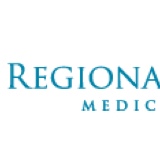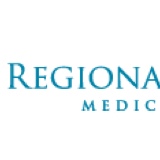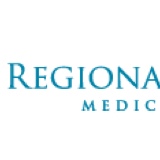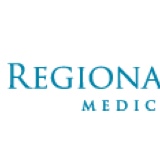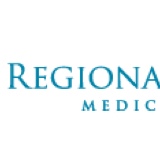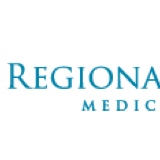Information
-
Document No.
-
Audit Title
-
Client / Site
-
Conducted on
-
Prepared by
-
Location
-
Personnel
-
Mat-Su Regional Medical Center
-
Physical Environment & Infection Control Rounds - Clinical Areas
-
EC.04.01.01.14.a
-
Select date
-
Department being surveyed:
-
Surveyed By:
-
Surveyed By:
PATIENT SAFETY MANAGEMENT
-
Are corridors kept clear to allow adequate space for:
-
A) Patients, visitors and staff to walk safely?
-
B) Carts, wheelchairs, equipment and beds to pass with
-
C) Are floors clear and slip-resistant finishes in place?
-
Deficiency
-
Responsible Person for Addressing Deficiency:
-
Date Corrected:
FIRE SAFETY MANAGEMENT
-
Are the means of egress corridors/exit doors:
-
A) Clearly and correctly marked for EXIT, including when fire doors are closed?
-
B) Are lights in exit signs functional?
-
C) Clear of any obstructions/equipment?
-
D) Are exterior patios, if in the exit passageway marked & EXIT & and free of obstructions?
-
E) In secured units, locked doors in the means of egress can readily be unlocked by staff at all times (e.g. keys carried by staff, pin-code or badge access)?
-
F) Are there CO2 fire extinguisher in place for use in Cath-Lab?
-
Deficiency
-
Responsible Person for Addressing Deficiency:
-
Date Corrected:
-
Are all fire extinguishers:
-
A) Clearly marked for identification and installed at correct height (maximum of sixty inches)?
-
B) Inspection tags current? (monthly and annual)
-
C) Safety seals intact and in place?
-
D) Accessible, with three foot clearance in all directions?
-
E) Within seventy five feet in any direction in the area? (main corridors only)
-
Deficiency
-
Responsible Person for Addressing Deficiency:
-
Date Corrected:
-
Are the fire alarm pull stations:
-
A) Accessible, with three foot clearance in all directions?
-
B) In good condition, free from tampering and glass bar in place where applicable?
-
Deficiency
-
Responsible Person for Addressing Deficiency:
-
Date Corrected:
-
Are combustible materials: cardboard, boxes, paper, linen, wastes)
-
A) Stored in proper containers? (32 gallons or less)
-
B) Kept to a minimum for daily use in department? (no over flowing containers)
-
C) Properly labeled and identified?
-
D) Are alcohol-based hand rubs properly mounted from electrical devices? (6 inch's from the center)
-
E) Kept in a safe and acceptable location?
-
Deficiency
-
Responsible Person for Addressing Deficiency:
-
Date Corrected:
-
Compressed gases and trash/linen chutes:
-
A) Are there less than 12 E-tanks (300 cu ft., oxygen) stored in the smoke compartment in storage?
-
B) Where compressed gas storage exceeds 300 cu ft., is there a designated, protected storage room?
-
C) Full and empty O2 cylinders in storage are segregated? (full and empty)
-
Deficiency
-
Responsible Person for Addressing Deficiency:
-
Date Corrected:
-
Fire Building Systems, components and Safety Practices:
-
A) Are all doors free from being propped, wedged or held open in any way?
-
B) Are all doorways clear to close properly?
-
C) Do patient/resident room doors latch when closed?
-
D) Do fire and stairwell doors latch positively and maintain closure?
-
E) Are all doors physically in good condition to prevent the spread of smoke or fire?
-
F) Is the area free from portable heaters and heating devices? (No heaters in the hospital per CHS)
-
G) Are rooms used as patient sleeping rooms free of deadbolt locks?
-
H) Is the area free from any evidence of smoking in the area?
-
I) Are furnishing and decorations fire-rated?
-
J) Is there at least 18 inchs; clearance between storage and sprinkler heads?
-
K) Are escutcheons in place on sprinkler heads and are they clean and free of debris?
-
L) Do patient privacy curtains have at least an 18 inch's; mesh top?
-
Deficiency
-
Responsible Person for Addressing Deficiency:
-
Date Corrected:
SAFETY MANAGEMENT
-
Are the floors in hallways:
-
A) In good physical condition?
-
B) Clean and dry?
-
C) Free from trip/fall hazards?
-
D) Wet floor signs used properly?
-
E) Carpet free of wrinkles or tears?
-
F) Free from obstruction? ( wires/cords etc.)
-
Deficiency
-
Responsible Person for Addressing Deficiency:
-
Date Corrected:
-
Are the walls:
-
A) Painted and in good physical condition? (Free of holes or water damage)
-
B) Free from exposed wiring of any kind?
-
C) Are electrical covers/plates in place and in good condition?
-
Deficiency
-
Responsible Person for Addressing Deficiency:
-
Date Corrected:
-
Are ceiling tiles:
-
A) In place and in good condition?
-
B) Free of dirt, mold, dust and stains?
-
C) Free from evidence of water stains?
-
Deficiency
-
Responsible Person for Addressing Deficiency:
-
Date Corrected:
INFECTION CONTROL & RISK MANAGEMENT
-
Infection Control Practices:
-
A) Are all sharps containers less than 2/3 full?
-
B) Is clean linen kept covered?
-
C) Is the clean linen physically separated from the dirty linen?
-
D) Are all medications dated and labeled?
-
E) Any outdated medication/supplies found?
-
F) Are refrigerators labeled to identify - Patient; Staff; Medication; use?
-
G) Are all patient foods dated and labeled?
-
H) Are current refrigerator temperature logs in place and readily available?
-
I) Are cardboard boxes off the floor, with no corrugated shipping containers present?
-
J) Is there evidence of BLOOD BORNE PATHOGEN PRECAUTION procedures in place? (gloves, masks, gowns, separation of waste, etc.)
-
K) Is personal protective equipment readily available for use?
-
L) Are the cabinets under the sinks free from storage of clean supplies/equipment?
-
M) Are all sharps storage areas kept locked at all times?
-
N) Have all product recalls been corrected by department?
-
O) Are floors, fixtures and equipment in clean condition?
-
P) Are patient rooms and bathrooms clean and suitable for patient care?
-
Q) Are emergency showers and eye washes tested?
-
R) Are current temperature logs in place; readily available on all blanket warmers? Are temperatures within range for blanket warmers (?130) and fluid warmers (?110)?
-
Deficiency
-
Responsible Person for Addressing Deficiency:
-
Date Corrected:
HAZARDOUS MATERIAL AND WASTE MANAGEMENT
-
Hazardous chemicals used in the area:
-
A) Are janitor closets and other rooms with chemicals secured and stored correctly? (flammables, corrosives, etc.)
-
B) Labeled correctly?
-
C) Disposed of correctly? (Are there procedures for disposal?)
-
Deficiency
-
Responsible Person for Addressing Deficiency:
-
Date Corrected:
-
MSDS Manual in the Area:
-
A) Are the department inventory (online) & updated within the past 12 months?
-
Deficiency
-
Responsible Person for Addressing Deficiency:
-
Date Corrected:
-
Medical Waste:
-
A) Stored in properly labeled bags and containers?
-
B) Properly stored and disposed of?
-
C) Stored and segregated appropriately?
-
D) Are bio-hazardous waste bulk storage areas secured, except to essential personnel?
-
Deficiency
-
Responsible Person for Addressing Deficiency:
-
Date Corrected:
MEDICAL EQUIPMENT MANAGEMENT
-
A) Are the inspection tags current with date of next inspection?
-
B) Is clean equipment identified and stored properly?
-
C) Are crash carts or carts with sharps and meds locked?
-
E) Are crash cart logs documented consistently?
-
F) Are medical equipment consumables (defib, pads, etc.) within expiration dates?
-
G) List two (2) equipment inventory tag numbers and verify that equipment information is correct and inspections are current.
-
Deficiency
-
Responsible Person for Addressing Deficiency:
-
Date Corrected:
UTILITY MANAGEMENT
-
Are emergency power outlets:
-
A) Clearly marked by red covers and outlets?
-
B) Being used for critical equipment only?
-
Deficiency
-
Responsible Person for Addressing Deficiency:
-
Date Corrected:
-
Electrical panels and devices:
-
A) Are breakers in distribution panels labeled?
-
B) Are mechanical/electrical rooms or exposed distribution panels kept locked, except to essential personnel?
-
C) Are all covers free from damage and securely in place?
-
D) Are waiting rooms provided with tamper-resistant outlets?
-
E) In the area free of extension cords and multi plug-in outlet strips? (Patient care area only)
-
Deficiency
-
Responsible Person for Addressing Deficiency:
-
Date Corrected:
-
Are medical gas zone and main valves:
-
A) Marked to identify the area served?
-
B) Are the valves accessible for immediate access? And not blocked?
-
Deficiency
-
Responsible Person for Addressing Deficiency:
-
Date Corrected:
SECURITY MANAGEMENT
-
SECURITY
-
A) Are all employees wearing identification badges in plain view?
-
B) Are all computer rooms locked?
-
C) Are all computers that re not in use - logged out?
-
Deficiency
-
Responsible Person for Addressing Deficiency:
-
Date Corrected:
EMERGENCY MANAGEMENT
-
EOP
-
A) Is the department emergency lighting box locked? (Clinical areas only)
-
B) Are the Emergency Procedures flip charts easily accessible? (Red Flip charts)
-
Deficiency
-
Responsible Person for Addressing Deficiency:
-
Date Corrected:
HAZARDOUS AREAS - (LS 19.3.5.4)
-
Soiled Utility Rooms and Storage Rooms > than 50 Square Feet
-
A) Clean, neat and orderly?
-
B) Items stored greater than 18 inches from fire sprinklers, unless fixed shelving against the wall?
-
C) Rooms are constructed as hazardous areas (i.e. 1 hour fire rated or smoke resistive and sprinklered)?
-
D) Do doors to Hazardous Areas have automatic closers?
-
E) Do doors to corridors and rated rooms positively latch?
-
Deficiency
-
Responsible Person for Addressing Deficiency:
STAFF QUESTIONS: 1 (Must Interview a minimum of one staff member)
-
Staff Member Job Title:
-
FIRE SAFETY MANAGEMENT
-
A) What does R.A.C.E stand for? (Rescue, Alarm, Confine, Extinguish or Evacuate)
-
B) How do you alert everyone that there is a fire? (Dial 6999 and have the operator announce "Code Red" and the location - or Pull a fire alarm box)
-
C) If a building evacuation is announced, what would you do? (Should know their departments staging area. (Nursing Department s Only)
-
SAFETY MANAGEMENT
-
A) What is the most important thing that you can do to prevent the spread of infection? (Hand Washing)
-
B) What equipment should employees wear while caring for T.B. patients? (N95 Mask or Orange Duck Bill)
-
C) What are the Standard Precautions? (Guidelines to follow to prevent the spread of infection. Examples like PPE)
-
D) Do you know where to find a current copy of the EOC/Safety manual online? ( On the Intranet Home page. Click on the EOC/Safety Manual Link)<br> EOC Safety Manual link
-
HAZARDOUS MATERIALS & WASTE:
-
A) What is a MSDS for? (Safety Precautions, hazards, and PPE to be used)
-
B) Can staff explain how to obtain MSDS information? (MSDS Sheets link on the Intranet Home Page)
-
D) Can staff explain what the Code is for a large HazMat spill? (Code Orange)
-
MEDICAL EQUIPMENT:
-
A) If a piece of medical equipment fails on a patient, you should? (Clinical Departments only) (Call your supervisor, remove it from service, keep all items like disposables, place a out of service slip on it, submit an event report to Risk Management if failed on a patient and send to Biomed)
-
B) Can staff describe how they know if equipment if safe for use? ( Look at the Biomed service sticker and note the date.)
-
C) Can staff explain emergency procedures for life-support equipment? (Describe what they should do for various life support equipment failures.)
-
UTILITIES:
-
A) Can staff describe who is authorized to shut off medical gases in the event of an emergency? (Resp. Therapy & Charge Nurse)
-
SECURITY:
-
A) Can staff explain the procedure to get help in the event of a security emergency (Code Silver)? (Dial 6999 & Code Silver called with a location)
-
B) Can staff explain their role to get help with an uncontrollable person? (Dial 6999 & call a Code Strong)
-
C) Can staff explain where to go and what to do when a Code Pink is called? ( Should know what exit their department is assigned to cover during a Code Pink. )
-
EMERGENCY MANAGEMENT:
-
A) What is the code for disaster that will activate our Emergency Management Plan? (Code Black)
-
B) Does staff know where to find a copy of the Emergency Operation Plan? (On the Intranet Home page. Click on the EOC Safety Manual link)
-
Deficiency
-
Responsible Person for Addressing Deficiency:
-
Date Corrected:
STAFF QUESTIONS: 2 (Must Interview a minimum of one staff member)
-
Staff Member Job Title:
-
FIRE SAFETY MANAGEMENT
-
A) What does R.A.C.E stand for? (Rescue, Alarm, Confine, Extinguish or Evacuate)
-
B) How do you alert everyone that there is a fire? (Dial 6999 and have the operator announce "Code Red" and the location - or Pull a fire alarm box)
-
C) If a building evacuation is announced, what would you do? (Should know their departments staging area. (Nursing Department s Only)
-
SAFETY MANAGEMENT
-
A) What is the most important thing that you can do to prevent the spread of infection? (Hand Washing)
-
B) What equipment should employees wear while caring for T.B. patients? (N95 Mask or Orange Duck Bill)
-
C) What are the Standard Precautions? (Guidelines to follow to prevent the spread of infection. Examples like PPE)
-
D) Do you know where to find a current copy of the EOC/Safety manual online? ( On the Intranet Home page. Click on the EOC/Safety Manual Link)<br> EOC Safety Manual link
-
HAZARDOUS MATERIALS & WASTE:
-
A) What is a MSDS for? (Safety Precautions, hazards, and PPE to be used)
-
B) Can staff explain how to obtain MSDS information? (MSDS Sheets link on the Intranet Home Page)
-
D) Can staff explain what the Code is for a large HazMat spill? (Code Orange)
-
MEDICAL EQUIPMENT:
-
A) If a piece of medical equipment fails on a patient, you should? (Clinical Departments only) (Call your supervisor, remove it from service, keep all items like disposables, place a out of service slip on it, submit an event report to Risk Management if failed on a patient and send to Biomed)
-
B) Can staff describe how they know if equipment if safe for use? ( Look at the Biomed service sticker and note the date.)
-
C) Can staff explain emergency procedures for life-support equipment? (Describe what they should do for various life support equipment failures.)
-
UTILITIES:
-
A) Can staff describe who is authorized to shut off medical gases in the event of an emergency? (Resp. Therapy & Charge Nurse)
-
SECURITY:
-
A) Can staff explain the procedure to get help in the event of a security emergency (Code Silver)? (Dial 6999 & Code Silver called with a location)
-
B) Can staff explain their role to get help with an uncontrollable person? (Dial 6999 & call a Code Strong)
-
C) Can staff explain where to go and what to do when a Code Pink is called? ( Should know what exit their department is assigned to cover during a Code Pink. )
-
EMERGENCY MANAGEMENT:
-
A) What is the code for disaster that will activate our Emergency Management Plan? (Code Black)
-
B) Does staff know where to find a copy of the Emergency Operation Plan? (On the Intranet Home page. Click on the EOC Safety Manual link)
-
Deficiency
-
Responsible Person for Addressing Deficiency:
-
Date Corrected:
-
Comments/Observations
-
Responsible Person for Addressing Deficiency:
-
Date Corrected:
SIGN OFF
-
Department Director or Representative:
-
Add signature
-
Lead Surveyor:
-
Add signature






